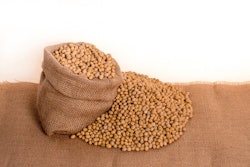
An article in the Financial Times caught my eye this morning. The title was ‘Seaweed pasta on the menu as agtech looks to feed world’ www.ft.com – subscription required. With a global population that is expected to grow to 9bn people by 2050, investment money is flowing into the ag sector and companies like Seamore have attracted funding to ensure we all have a meal on our table in the future. Even if it’s seaweed pasta, the world has to eat.

According to AgFunderhttps://agfunder.com/they forecast that around 4.6 Billion will be invested into the agtech sector in 2016.
I recently attended the Midwest AgTech Conference in Chicago. If you are interested in what is happening in the investment space, I would highly recommend attending in the future. There I learned the $4.6bn number is a bit deceiving. Around half went to food delivery related investments, so direct investments into the ag sector were not the total amount, but still pretty impressive.
How are the investments doing so far in Ag?
The AgTech space is somewhat saturated with 60+ companies each chasing data management and drones respectively. There really is no clear winner out there. Farmers (myself included) are heavily marketed to in the data management space, and with consolidation, those numbers continue to shrink.
Issues that stifle growth is a clear need for an ROI. When the tractor replaced the horse, that was pretty clear. Less so on some of the offerings out there today. Many software data applications require work up front to learn the application and then to upload/enter data. Then, the big fear is will the company I select last! If not, then I start over again. It comes down to a trust issue.
Other issues with adoption are the seasonality and cyclical world we live in. If a new technology comes out, producers will want to test it over perhaps a couple of growing seasons. This takes time and is a reason for the slower adoption in this space. In the investment world, this is called a ‘long runway’. If you invest in ag, be prepared to not see results for 2 to 3 years.
What can Feed/Grain companies do here?
So if your suppliers/customers, the farmers out there are not settling with a clear tech winner here, what can you do to help them? After all, there should be some great trust built up between you. Here are some areas that were identified as missing from the current tech movement:
- Data movement – keeping the grower in control!
- Drone spot spraying
- Better risk management – help improve margins
- Grain marketing help (one I have been involved in for over 30 years and have seen only small improvements)
- Freight logistics – better use of assets – one mentioned an “UBER” for trucks
Perhaps there are some home-grown technologies that will solve the problem of feeding the world. There is obviously no clear winner from the billions invested so far in the ag sector, but definitely an area to keep watch of.
This Thanksgiving, I think I would pass the seaweed pasta on down the line and hold out for some turkey and dressing!
Charlie
.jpg?auto=format%2Ccompress&fit=max&q=70&w=400)
